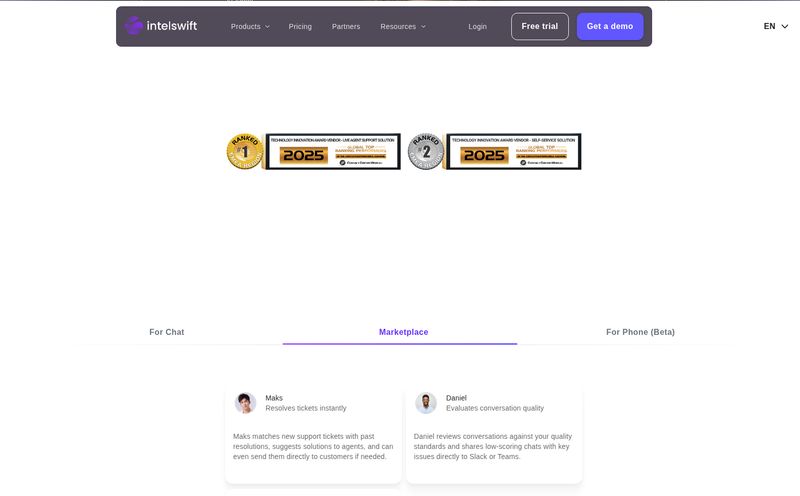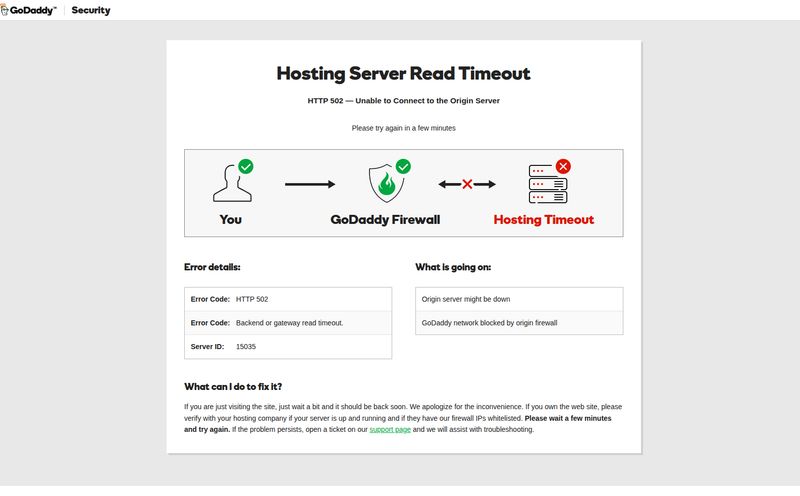I still have nightmares about a product shoot from back in 2018. We were launching a new line of artisanal soaps. Sounds simple, right? Wrong. We needed lifestyle shots, sterile white-background shots for Amazon, close-ups of the texture... the whole nine yards. It took two days, a grumpy photographer, a rented studio that smelled like stale coffee, and a budget that made our finance guy visibly twitch. In the end, we got the shots, but man, what a grind.
Fast forward to today, and the landscape is just… different. Every week, it feels like a new AI tool pops up promising to solve all our problems. Most of them are shiny toys—fun for a bit, but not really built for the heavy lifting of a real business. But every now and then, something comes along that makes you sit up and pay attention. That’s the feeling I got when I first stumbled upon PhotoG.
It bills itself as an AI-powered tool for generating marketing visuals. But honestly, that’s selling it short. It’s more like a complete marketing department in a box. So, is it just another flash in the pan, or is it the real deal? Let’s get into it.
So, What Exactly Is PhotoG?
Okay, let's break it down. At its core, PhotoG is a generative AI platform designed specifically for e-commerce brands. You give it a picture of your product, and it doesn't just clean it up; it creates a whole universe of marketing assets around it. Think high-quality product photos in any setting you can imagine, slick 'spin' videos that show off every angle, and even 3D models.
The company describes it as a “cohesive team of specialized AI agents” working together. I love that analogy. It’s not one tool doing one thing. It's like having a tiny AI photographer, an AI copywriter, and an AI market analyst all collaborating on your product launch. It's a pretty bold claim, but the concept is solid gold for anyone who's ever tried to juggle all those roles themselves.
The Features That Actually Matter to Marketers
Features lists can be boring. Let's talk about what this stuff actually does for someone trying to move product.
Beyond Just Pretty Pictures: The Visuals Engine
This is the headline act. The ability to generate stunning AI photos is the main draw. Imagine you sell a water bottle. Instead of booking a model and hiking to a mountain, you can just tell PhotoG, “Show this water bottle on a rock next to a mountain stream at sunrise.” And poof, you get a library of options. This is a game-changer for creating diverse ad creatives and social media content without the logistical nightmare of a real photoshoot.

Visit PhotoG
And it's not just static images. The platform also creates engaging product videos and 3D models. That's huge for platforms like Shopify, which are increasingly supporting more interactive product views. Giving a customer the ability to spin a product around on their screen? That’s a conversion booster, plain and simple.
The Built-in SEO and Content Brain
Now this is where my ears really perked up. PhotoG claims to have “SEO-optimized content creation.” As an SEO guy, I'm naturally skeptical. A lot of AI writers just produce generic, keyword-stuffed fluff. But integrating content creation with visual generation and market research is a different beast entirely.
The idea is that the AI doesn't just write a description; it writes it with an awareness of what works for your product on specific platforms. It can help you pump out unique descriptions for hundreds of SKUs, which is a monstrous task that often gets neglected. If it can do that well, it saves an incredible amount of time and helps you avoid the dreaded duplicate content penalties that can happen with lazy product listings.
A Spyglass on Your Competition
This might be the most underrated feature of the bunch. PhotoG includes market research and competitor price analysis. This transforms it from a simple production tool into a strategic one. Before you even generate your images or write your copy, the AI can supposedly give you a lay of the land. Who are your main competitors? What are they charging? What kind of marketing angles are they using?
Having this intelligence baked right into your content workflow is incredibly powerful. It means you’re not just creating content in a vacuum; you’re creating content designed to compete. That’s a subtle but massive advantage.
The Good, The Bad, and The... Vague
No tool is perfect, and I’m not here to sell you snake oil. Let’s get real about the pros and the cons I've gathered.
What I Really Like About PhotoG
The all-in-one approach is the biggest win for me. Juggling five different subscriptions for AI images, copywriting, video clips, and scheduling is a pain. Consolidating it all is a massive relief. The potential to create custom marketing workflows also sounds fantastic—setting up a process where a single product upload triggers image creation, copy generation, and scheduling. That's the dream, right?
Plus, the sheer potential for creative output is mind-boggling. You can test dozens of visual concepts for a fraction of the cost and time of traditional methods. For a small to medium-sized business, this opens up a level of marketing agility that was previously only available to a huge corporation like Nike or Coca-Cola.
Potential Hurdles and My Concerns
Okay, deep breath. First, like any powerful software, there's probably a learning curve. I doubt you can just log in and be an expert in five minutes. You'll need to invest some time to figure out how to write the right prompts to get the results you want.
Second, and this is a big one for any generative AI: its effectiveness depends entirely on the quality of your input. The old saying “garbage in, garbage out” is the golden rule here. If you upload a blurry, poorly-lit photo of your product, don’t expect the AI to work miracles. You still need a decent source image to get started.
But my biggest gripe? The pricing is a complete black box. And that brings me to my next point.
So, What's the Price Tag?
Here’s the million-dollar question. And the answer is… I have no idea. And neither will you if you just visit their website. There's no pricing page. No neat little tiers labeled “Basic,” “Pro,” and “Enterprise.”
This usually means one of two things: it’s either aimed squarely at large enterprise clients with custom contracts, or they’re still in a beta/early-adopter phase where you have to “request a demo” to get the details. It's a bit of a frustrating lack of transparency, to be honest. It makes it hard for a small business owner or marketing manager to quickly assess if it’s even within their budget. I get the strategy, but it’s not my favorite.
Who is PhotoG Actually For?
Based on its feature set and the mysterious pricing, PhotoG feels like it's built for e-commerce businesses that are past the garage startup phase. I'm thinking of brands with a decent number of products that are serious about scaling up their online marketing. Solo entrepreneurs might find it a bit much, but for a team looking to streamline operations and punch above their weight creatively, it could be a perfect fit.
It’s for the brand that understands the value of good marketing but doesn't have the budget for a full-time, in-house creative department. It automates the grunt work, freeing up humans to focus on the big-picture strategy.
My Final Verdict on PhotoG
Look, the world of AI marketing tools is crowded and noisy. But PhotoG seems to be one of the few platforms that truly understands the entire e-commerce workflow. It’s not just an image generator; it’s a strategic marketing partner.
The lack of clear pricing is a significant hurdle, and you'll need to be prepared to put in the work to master it. But the potential is undeniable. The ability to generate an entire campaign's worth of visual and written content from a single product photo is, frankly, the direction things are heading. Forgetting about those nightmare photoshoots of the past? That alone might be worth the price of admission.
Frequently Asked Questions
- What is PhotoG?
- PhotoG is an all-in-one generative AI platform for e-commerce. It helps brands create product photos, videos, 3D models, and written marketing content from a single product image, and also provides market research tools.
- Can PhotoG create videos and 3D models?
- Yes. Beyond static images, it can generate 'spin' videos that showcase a product from multiple angles and create 3D models, which are great for interactive storefronts on platforms like Shopify.
- Does PhotoG help with SEO?
- It includes a feature for creating SEO-optimized content, like product descriptions. The goal is to help businesses generate unique, relevant copy for their products at scale, which is beneficial for search engine rankings.
- Is PhotoG good for beginners?
- While it’s designed to be a streamlined solution, any powerful, multi-faceted tool will have a learning curve. Beginners can certianly use it, but they should expect to spend some time learning how to get the best results.
- How much does PhotoG cost?
- Unfortunately, PhotoG does not publicly list its pricing on its website. Interested users typically need to contact their sales team or request a demo for pricing information.
- What platforms can I use PhotoG content on?
- The content is designed for multi-platform use. It's ideal for e-commerce sites like Shopify or BigCommerce, marketplaces like Amazon, and for creating ads and posts for social media platforms like Instagram, Facebook, and TikTok.
Reference and Sources
- Information on PhotoG's capabilities was sourced from their promotional materials. For direct inquiries, you'd have to visit their (placeholder) website:
www.photog-ai-official.com - For more on the impact of AI on e-commerce, the Marketing AI Institute offers great insights.
- To see how 3D models are being integrated into stores, check out Shopify's own guide on the topic.



